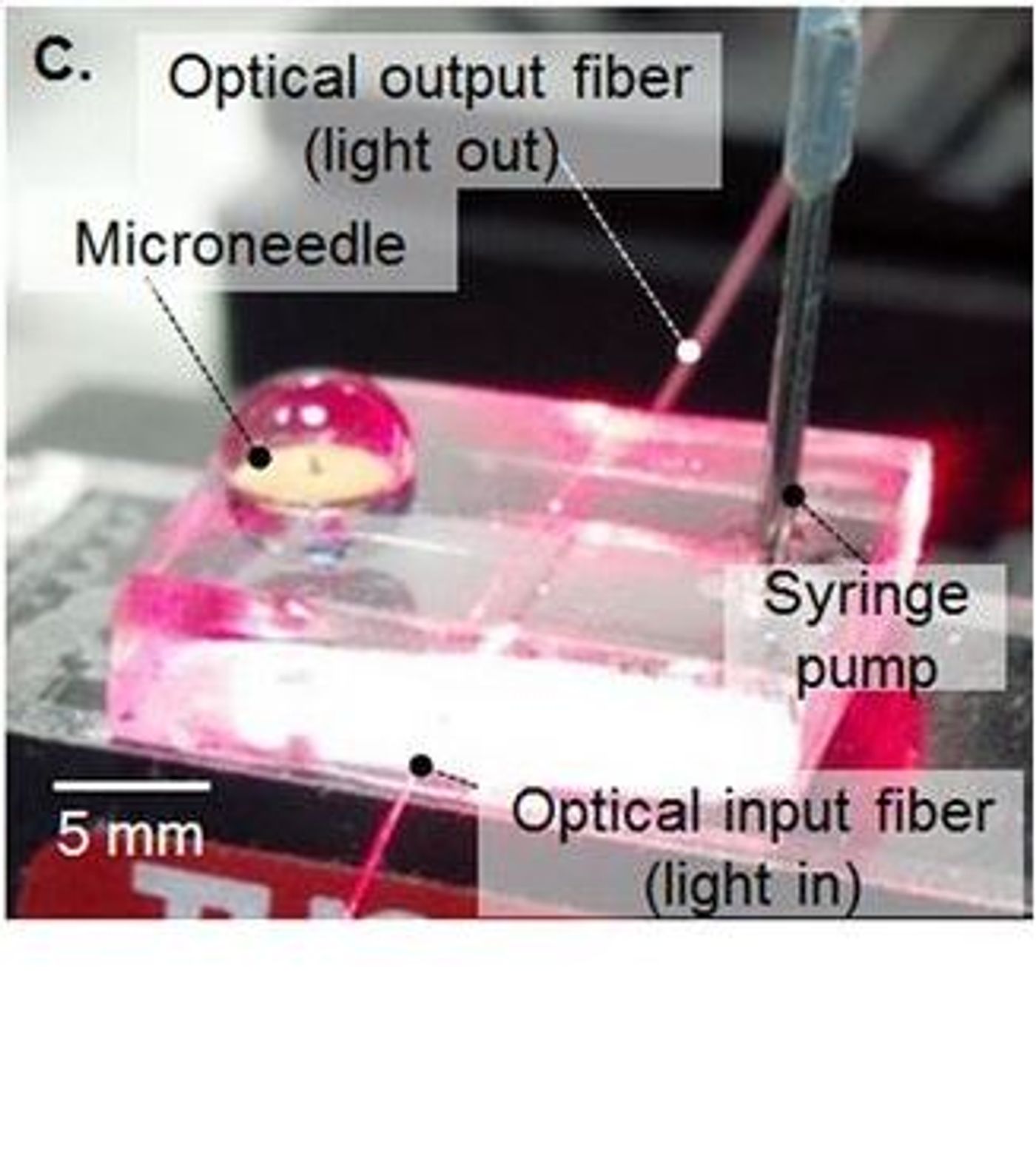Certain antibiotics, immunosuppressants, anticonvulsants, chemotherapeutics, etc. are incredibly helpful, but also have a narrow therapeutic range. The concentration of drugs like this in the bloodstream thus has to be closely monitored to prevent dangerous side effects. This practice is called therapeutic drug monitoring (TDM) and can be inconvenient and invasive for the patients, as well as expensive.
A collaborative effort by researchers at the University of British Columbia and the Paul Scherrer Institut (PSI) in Switzerland have combined the technology of microneedles, microfluidics, and optics to solve the problems posed by TDM.

The research, recently published in Scientific Reports, describes a compact, combined “microneedle-optofluidic biosensor” that is capable of detecting blood concentrations of vancomycin, an intravenously administered antibiotic, without needing to actually draw blood. Vancomycin is a powerful antibiotic with a therapeutic range of 20-40µg/mL. If concentrations of vancomycin exceed this range, it can cause irreversible deafness and renal failure. Because of these serious side effects, patients undergoing vancomycin treatment must be hospitalized for the duration of the treatment and have blood draws 3-4 time every day to monitor the blood concentration of vancomycin. Not only is this very uncomfortable and invasive for the patient, but the commercially available kits to detect vancomycin concentrations are somewhat expensive.
Enter the microneedle. The microneedle pierces the tough, outer layer of skin to collect a very small sample (0.6nL) of interstitial fluid. There have been many studies that show a correlation between drug concentrations in the blood and the interstitial fluid, so this is a valid strategy. The microneedle collects the interstitial fluid and performs a reaction whose readout can be read with an optical sensor. This tool really simplifies the TDM of vancomycin. Instead of having to draw 50-100µL of blood 3-4 times a day and use that blood with an expensive kit to get the results, the patient would just have to wear a patch with the microneedle that collects the sample and performs the analysis. Additionally, the microneedle has a much lower limit of detection than the vancomycin-detecting kits, and so is a more sensitive test. It’s an all-in-one device that could eliminate the necessity for hospitalization during vancomycin treatment.
Microneedle technology has been explored for painless vaccinations and drug delivery, but using it for TDM is a more novel use. While this paper only demonstrated the microneedle’s efficacy for vancomycin TDM, it has the potential reduce patient anxiety and pain, increase patient compliance, lower costs, and expedite TDM for all sorts of therapeutics.
Sources:
EurekAlert and
Scientific Reports









